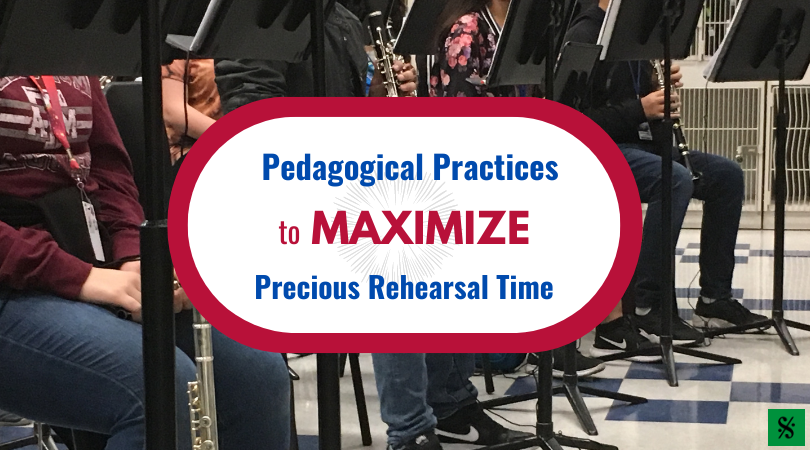Even the best behaved percussion students might succumb having their attention strained as most of the instruction from the podium might be directed towards their wind counterparts. Sometimes, percussion students have trouble fully understanding their purpose in the ensemble and in the rehearsal. Before you begin your “concert season,” take the time to sit down with your percussion students to go over proper percussion rehearsal etiquette.
-
You must take care of your equipment.
- Percussion instruments are meant to be played on ONLY.
- They are not tables or docking stations for your mallets.
- Be sure not to lean on anything.
-
If it’s not being used, it’s okay to move it to a place clear of traffic.
- Every setup needs to fit your specific requirements for your rehearsal.
-
Set up as quickly as possible prior to rehearsal. Check to see what pieces you will be rehearsing.
- Take this time to get your setup ready for each piece.
- Have your music all in rehearsal order.
- This will give yourself more time to warm up, and spot check any weak sections.
- Try to minimize movement of equipment between pieces.
-
Always be aware of your surroundings.
- Setups can get tight and maybe even overlap.
- Move cautiously in and out of setups.
-
Make as little noise as possible when tacet.
- Make a habit of turning the snares off as often as possible. Don’t forget to turn them back on!
- Carefully place sticks and mallets down on trap tables, not equipment.
- Be aware of the volume of your foot tap.
- Quietly finger through parts — tips of fingers, not fingernails.
- The lower octave of a marimba is very resonant.
-
Be engaged in all instruction from your director.
- Every contributing member of the ensemble must be aware of the goals at hand.
- Even percussionists focus on breathing.
- Rehearsal markings, ritardandos, fermatas, etc.
-
Always be ready to jump in.
- Make checkpoints during your 40 measures of rest.
- Add in your own cues.
- You must always be counting.
- Scan your music for any extra surprises. Leave no part uncovered.
-
Listen to the band and fit your sound into the ensemble.
- Find sections that play your part as well.
- Match intensity, duration, and articulations.
-
Don’t be afraid to play out.
- What might be forte to your ears, sounds mezzo piano to your director/audience.
- Put your sound into the ensemble, not over it.
- Maintain touch, tone, and technique.
- Marimba, timpani, and vibraphone require a slightly harder mallet so that the timbre can be heard.
- Impact points
-
ASK QUESTIONS
- Don’t leave anything to guessing; this leads to wasted reps.
- When in doubt, ASK!
- “Are you hearing my part okay?”
- “Are there any other sections playing my part with me?”
- “Would you like more?”
- “Can you please repeat those instructions again?”
- “Is this mallet choice okay?”
- “What does Piatti mean?”
A percussion section that functions efficiently, quietly, and effectively is a well-oiled machine. Taking the time to make sure your percussionists are set up for success will save a lot of frustrations as we go deeper into the season. You can always refer to the “by-laws” of The Percussionist’s Etiquette to remind your percussionist of their duties during a concert or rehearsal.
Rick Astorga received a bachelor of music degree from Texas State University and is the Associate Director of Bands and the Director of Percussion at William Howard Taft High School in San Antonio. He is a member of the Texas Music Educators Association, the Texas Band Masters Association, the Percussive Arts Society, the National Association for Music Education, and is an endorser and a member of the Education Team for Vic Firth and endorses Zildjian Cymbals.
Related Reading:
Five Minute Drill – Fun Classroom Routines for Percussion
Percussion Room Makeover
Teaching Snare Drum, Day One
If you would like to receive our weekly newsletter, sign up here.
Don’t forget to like us on Facebook too!
Learn. Share. Inspire.
BandDirectorsTalkShop.com







Leave a Reply
You must be logged in to post a comment.